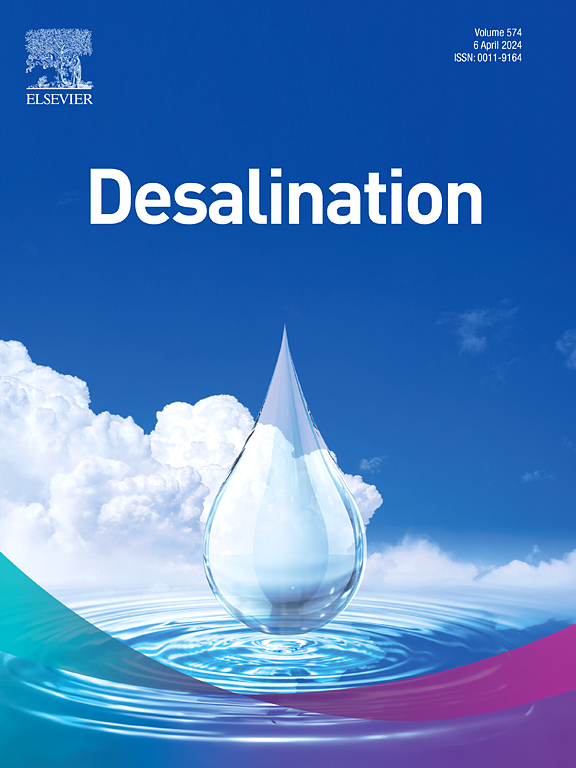Relative assessment of constrained multiple objective optimization techniques for optimal pumping strategy design to mitigate saline water intrusion in coastal groundwater systems
IF 8.3
1区 工程技术
Q1 ENGINEERING, CHEMICAL
引用次数: 0
Abstract
Saltwater intrusion (SWI) degrades water quality in coastal groundwater systems. Over-abstraction from these aquifers accelerates SWI, necessitating practical measures to prevent it and enable sustainable extraction of groundwater resources. Simulation-optimization (S/O) methods have been widely adopted for developing optimized groundwater extraction strategies, with optimization algorithms playing a critical role. This study compared several constrained multi-objective optimization algorithms (CMOOAs) for designing pumping schemes to mitigate SWI in coastal aquifers. The evaluated algorithms included the Controlled Elitist Multi-Objective Genetic Algorithm (CEMOGA), Multi-Objective Feasibility Enhanced Particle Swarm Optimization (MOFEPSO), Multi-Objective Lichtenberg Algorithm (MOLA), and Multi-Objective Pareto Search (MOPS). A bi-objective SWI management model was developed using an S/O approach, with the FEMWATER code replaced by a surrogate model based on Multivariate Adaptive Regression Spline (MARS) to improve computational efficiency. The MARS model effectively captured aquifer processes, demonstrating strong correlation metrics (R = 0.986–0.999) and low error indicators (NRMSE = 0.001–0.019, MAE = 0.522–6.291 mg/l). This surrogate model was integrated with each CMOOA to design optimal pumping strategies that maximize beneficial abstraction while minimizing SWI. Multiple independent MARS-assisted optimization runs were conducted for a robust comparison of solution accuracy and convergence time. Results showed that MARS-CEMOGA outperformed other algorithms, delivering the highest solution quality and computational efficiency, requiring just 323.86 s compared to 388.12 s for MOPS, 999.18 s for MOFEPSO, and 2316.55 s for MOLA. The study demonstrates that MARS-CEMOGA is a highly efficient tool for developing SWI management models in coastal aquifers, although other CMOOAs also produced satisfactory results.
求助全文
约1分钟内获得全文
求助全文
来源期刊

Desalination
工程技术-工程:化工
CiteScore
14.60
自引率
20.20%
发文量
619
审稿时长
41 days
期刊介绍:
Desalination is a scholarly journal that focuses on the field of desalination materials, processes, and associated technologies. It encompasses a wide range of disciplines and aims to publish exceptional papers in this area.
The journal invites submissions that explicitly revolve around water desalting and its applications to various sources such as seawater, groundwater, and wastewater. It particularly encourages research on diverse desalination methods including thermal, membrane, sorption, and hybrid processes.
By providing a platform for innovative studies, Desalination aims to advance the understanding and development of desalination technologies, promoting sustainable solutions for water scarcity challenges.
 求助内容:
求助内容: 应助结果提醒方式:
应助结果提醒方式:


